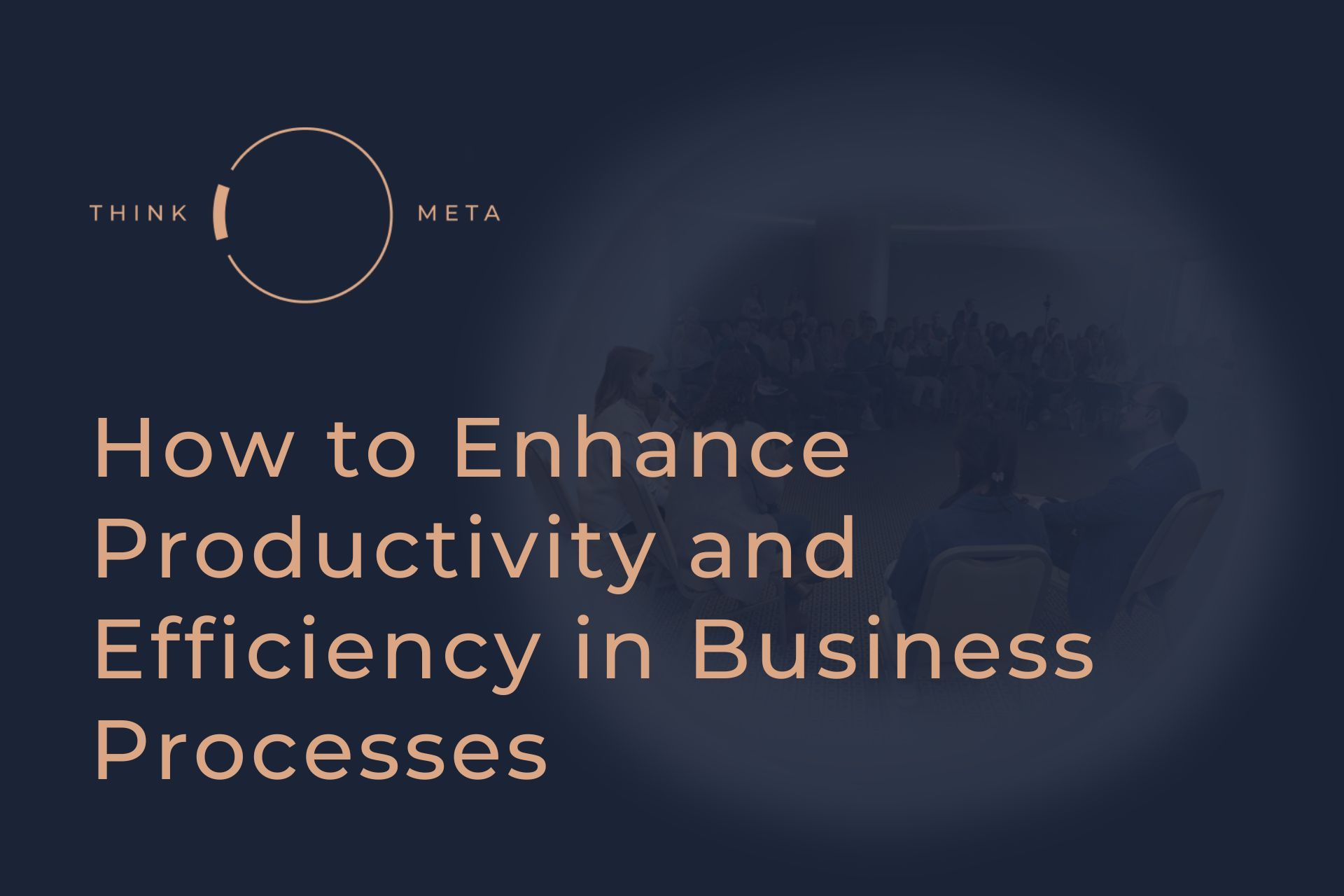How to Enhance Productivity and Efficiency in Business Processes

Improving productivity and work efficiency is not only important for professional success but also benefits our mental health and well-being, allowing us to maintain a work-life balance.
Besides clear benefits for individuals, enhanced productivity is also good for organisations. More tasks completed with higher quality will ensure profit. Just as importantly, employees who feel productive and efficient will be less likely to experience emotional exhaustion, burnout, physical illness, or resignation from the job.
However, for organisational success, it is not enough for employees to work on increasing their productivity. The entire system and process need to be optimised.
The Importance of Optimising Business Processes
Organisations that want to increase productivity need to analyse their business processes and procedures. Before they can improve the process, they need to identify which practices are working and which processes need improvement.
When business processes are not optimised, even employees with exceptional work habits will struggle simply because the system hasn't set them up for success.
Identifying Areas for Improvement
If you want to improve efficiency and productivity, the first and most important step is to analyse current business processes. An objective analysis will reveal bottlenecks and inefficiencies. While this might sound simple and obvious, many organisations (and managers) don't have the capacity for objective analysis even when they are motivated to change.
In those situations, hiring someone external can be a great choice. Business coaches can play a crucial role in driving performance improvement by conducting an objective analysis and creating concrete steps for business success.
Implementing Lean Principles and Continuous Improvement
Lean methodology originated from the automotive industry in Japan after the Second World War, quickly gaining popularity around the globe. This highly effective management approach can also be applied to other areas, including the production and service industries.
Intrinsic to the lean methodology philosophy is that it "encourages continuous incremental improvement in performance with the goals of adding value to the services provided and achieving and maintaining the highest possible levels of customer satisfaction." (Kruskal et al., 2012, pp. 574)
It is important to note that the lean approach does not lead to quick t and easy results; it is a long-term commitment.
So how can one achieve higher productivity and efficiency using lean principles?
Lean methodology focuses on :
- Eliminating waste
- Keeping the work environment neat, clean, and safe
- Providing more services and producing more products with less time and fewer resources
- Including all employees
(Kruskal et al, 2012)
Utilising Technology for Greater Efficiency
Thoughtful selection of suitable tools and software can vastly improve business processes. Recent technology development has allowed us to automate repetitive tasks and save time and resources. However, it is critical to carefully evaluate the available options, as some tools might be too demanding for employees, which will decrease their productivity.
This phenomenon is known as "technology overload" and refers to a decrease in productivity when using more tools. Decreased productivity could result from information overload, communication overload, and system feature overload (Karr-Wisniewski & Lu, 2010).
According to a 2007 study, 28% of our workday is "consumed by interruptions propagated by technology" (for details, see Karr-Wisniewski & Lu, 2010). It is reasonable to assume that today this percentage is even higher. Just recall some idle chit-chat on a group chat that continues to pop up while you try to finish that important report.
Sometimes less is more. Use only tools that are useful for your business regardless of their ratings and popularity. At the end of the day, for your team, even a white board could be sufficient for tracking results.
Enhancing Team Collaboration and Communication
It is no secret that effective communication is a key factor for success, not just in business. There are several ways in which organisations can improve their communication.
Firstly, fostering a culture of open communication and knowledge sharing will create an atmosphere of psychological safety. One study (Cole et al., 2022) showed that although psychological safety was inversely associated with the amount of ideas generated, it was positively associated with the quality of ideas. In other words, the team created fewer but higher-quality ideas.
Another way to foster team collaboration and communication is to utilise collaboration tools. Many organisations use software such as Teams or Slack to expedite communication and the sharing of information. Time management tools like Asana can also improve communication and enable the team to track their progress. Each organisation has its own needs, so the only criteria should be whether a particular tool increases efficiency.
Measuring and Monitoring Process Performance
Finally, the most important step is measuring and monitoring process performance. A business coach can help establish key performance indicators (KPIs), allowing the organisation to track progress and set new developmental goals. Key performance indicators can be defined as "a metric representing an actual or perceived level of work completion or lack thereof" (Bortoluzzi et al., 2018).
Once set up, KPIs should be regularly reviewed, and the business processes and practices should be adjusted for optimal results.
Individual businesses rely on different metrics; therefore, the KPIs used will vary. However, it's important to choose a few relevant indicators for your business process.
Generally speaking, KPIs can be classified into three categories (Bortoluzzi et al., 2018):
Quantitative - such as absenteeism, performance, employee turnover, time worked, profitability, outputs, etc.
Qualitative - such as employee performance self-assessment, engagement, presentism, and perceived work ability
Mixed - a combination of quantitative and qualitative data
Enhancing productivity and efficiency in business processes is a demanding and ongoing task that requires a lot of effort and expertise. Often this is not something that an organisation can do without external help. Hiring a business coach will allow you to make visible changes while progressing towards your goal.
A business coach can identify the organisation's key issues, propose steps for improvements and define appropriate KPIs for measuring effects and evaluation. Group or individual coaching can enhance adherence to a plan and vision and improve team communication and psychological safety. Finally, a coach can also facilitate the evaluation of tools and software that will enhance team efficiency.
Literature
Bortoluzzi, B., Carey, D., McArthur, J. J., & Menassa, C. (2018). Measurements of workplace productivity in the office context: A systematic review and current industry insights. Journal of Corporate Real Estate, 20(4), 281-301.
Cole, C., Marhefka, J., Jablokow, K., Mohammed, S., Ritter, S., & Miller, S. (2022). What Is the Relationship Between Psychological Safety and Team Productivity and Effectiveness During Concept Development? An Exploration in Engineering Design Education. Journal of Mechanical Design, 144(11), 112301.
Karr-Wisniewski, P., & Lu, Y. (2010). When more is too much: Operationalizing technology overload and exploring its impact on knowledge worker productivity. Computers in Human Behavior, 26(5), 1061-1072.
Kruskal, J. B., Reedy, A., Pascal, L., Rosen, M. P., & Boiselle, P. M. (2012). Quality initiatives: lean approach to improving performance and efficiency in a radiology department. Radiographics, 32(2), 573-587.

